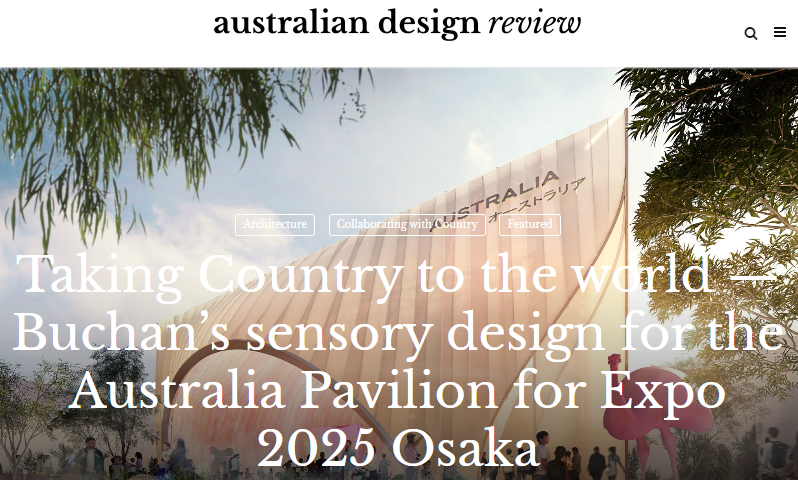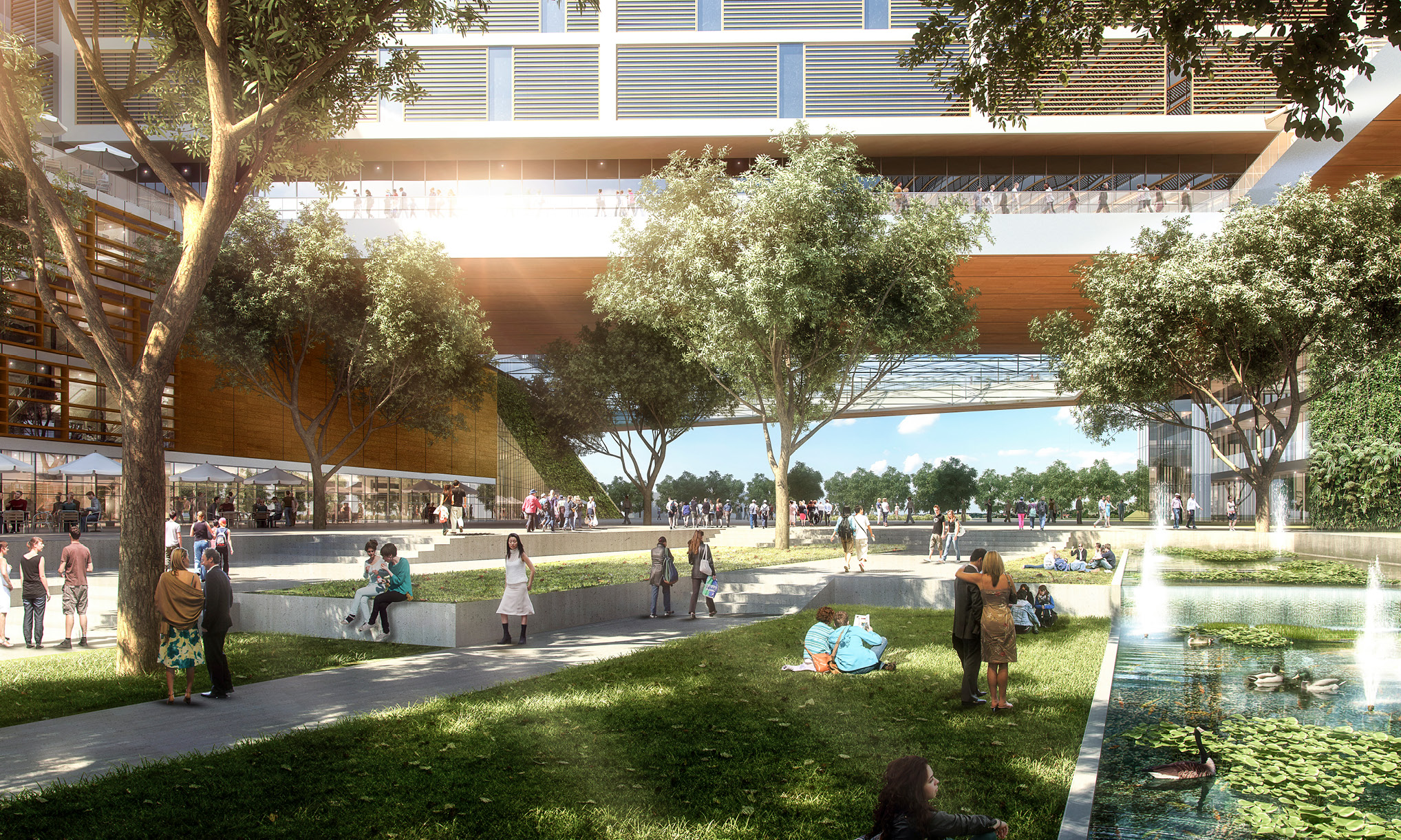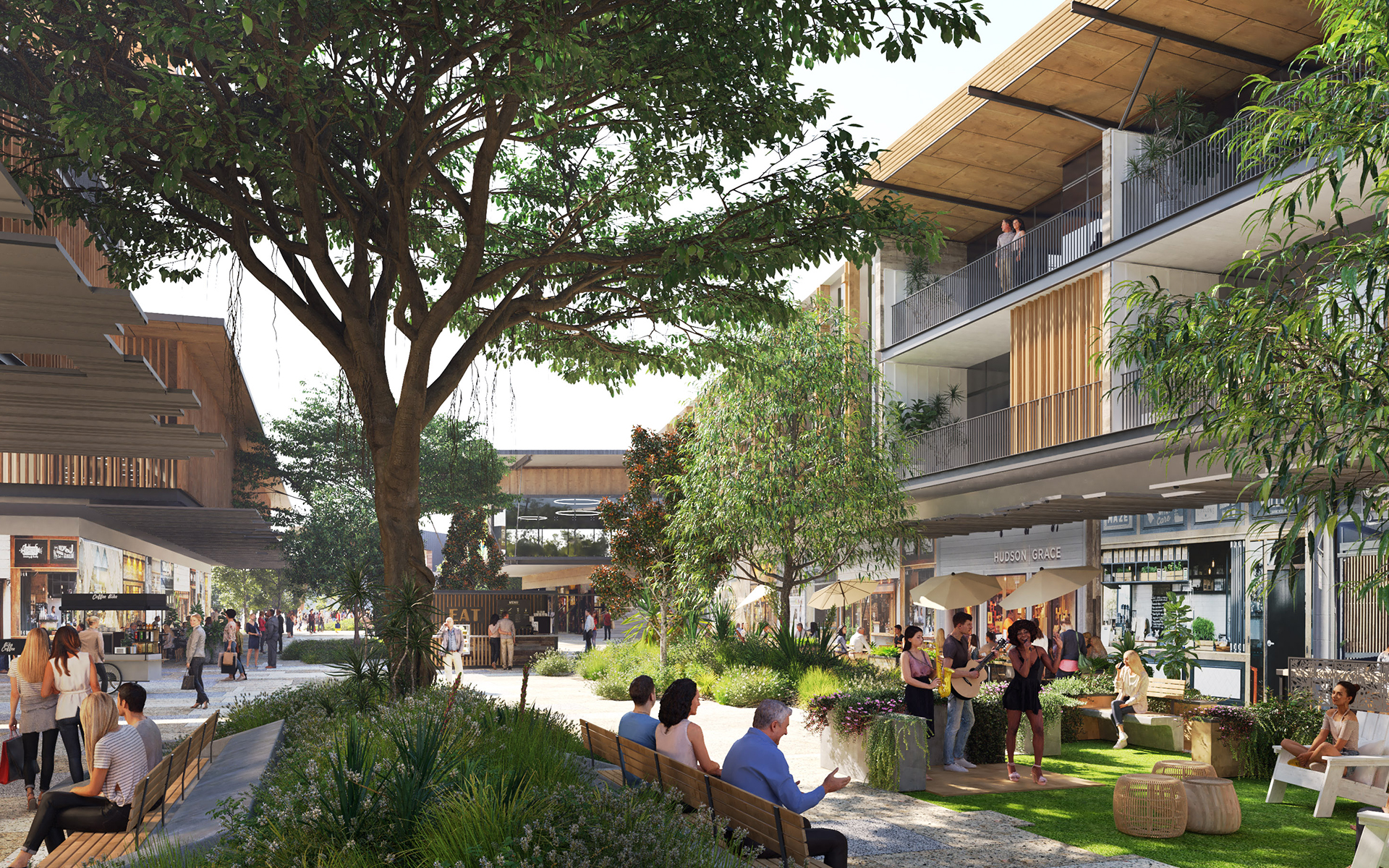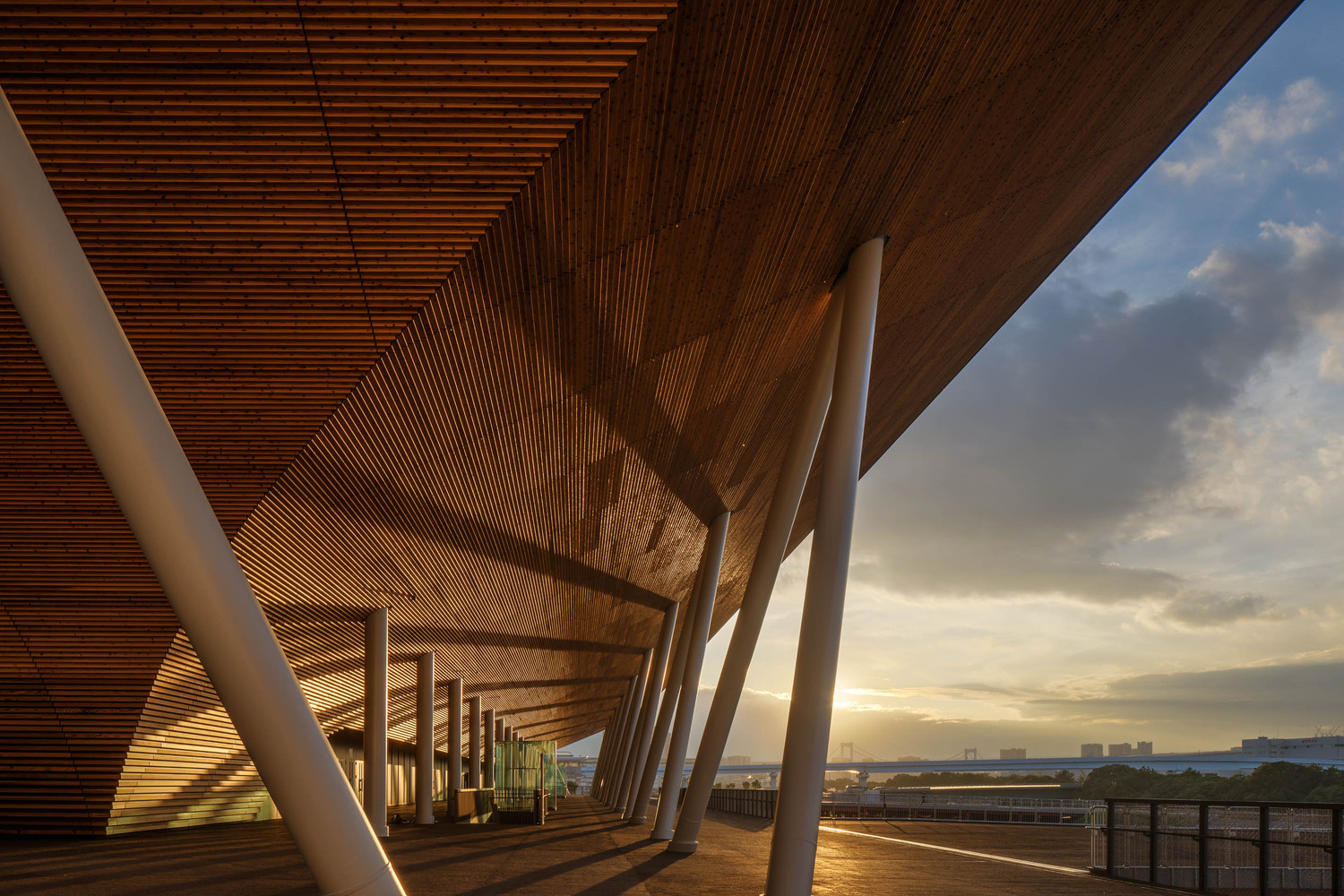Holistic and integrated by design
Starting with a clear vision, health precincts are more than adjacent or co-located facilities; they are dynamic ecosystems designed to promote community health and connectivity. By integrating relevant complementary uses such as education, life sciences, residential and retail alongside healthcare facilities, these precincts foster a holistic approach to health and well-being that extends beyond the walls of hospitals and clinics. Importantly services and infrastructure must support current and future demand from the local community.
Promoting community connectivity
Health precincts are designed with the goal of fostering a sense of community. The inclusion of public realm, green spaces and walkable streets for example, facilitates opportunities for social interaction and physical activity. The focus on community-oriented design also supports a network of care, where local communities can form supportive relationships that contribute to overall emotional and physical well-being.
Co-created for comprehensive care
In addition to promoting healthy lifestyles, health precincts aim to improve access to a comprehensive range of health services for all members of the community. By integrating public and private facilities with adjacent health and wellness amenities, such as allied health, pharmacies, wellness centres, and community clinics, these precincts provide local residents with convenient access to a range of care providers.
Fostering collaboration and innovation
Health precincts serve as centres for healthcare innovation. The close proximity of various health services brings together diverse stakeholders, including healthcare providers, researchers, educators, and technology, to create an environment conducive to collaboration and the accelerated development of new healthcare technologies and methodologies. This approach drives continuous improvement in healthcare delivery and outcomes.
Driven by long-term sustainability
Masterplanned and well-executed health precincts prioritise flexible and sustainable design principles to ensure developments are attuned to future health and climate related demands and changes in community needs and expectations. Considered planning can also act as a lever for local economic activity and growth over the longer term, attracting businesses and healthcare professionals, and creating opportunities for further investment.
Today, prioritising community health and wellbeing presents significant opportunities for leading with health in precinct-style developments. Beyond traditional healthcare facilities, the concept of health encompasses shaping urban environments that seamlessly integrate a range of complementary uses. By taking a holistic approach and emphasising physical, mental, and social wellness we can curate vibrant communities that yield enduring value.
Designed by HKS, the Duke Green Level West health precinct development in North Carolina, USA aligns with the Town of Cary’s 2020 Vision for a destination that combines places for working, living, shopping hospitality and recreation as well as a full range of related health care programs.






